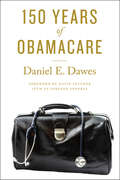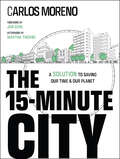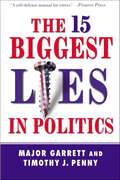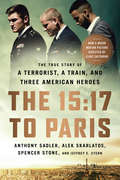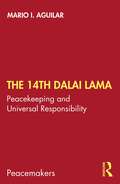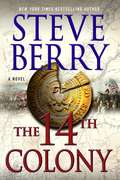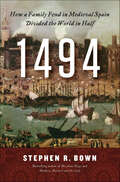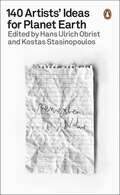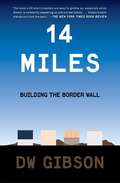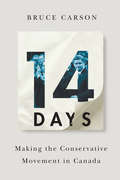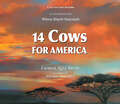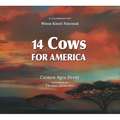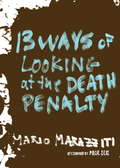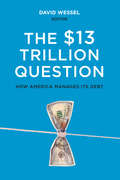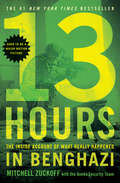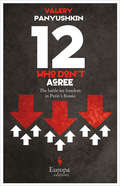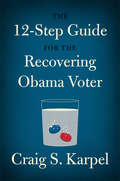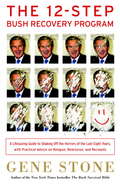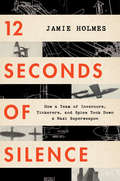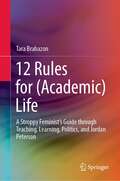- Table View
- List View
150 Years of ObamaCare
by Daniel E. DawesGo behind the curtain of the creation and implementation of the Affordable Care Act.In this groundbreaking book, health-care attorney Daniel E. Dawes explores the secret backstory of the Affordable Care Act, shedding light on the creation and implementation of the greatest and most sweeping equalizer in the history of American health care. An eye-opening and authoritative narrative written from an insider’s perspective, 150 Years of ObamaCare debunks contemporary understandings of health reform. It also provides a comprehensive and unprecedented review of the health equity movement and the little-known leadership efforts that were crucial to passing public policies and laws reforming mental health, minority health, and universal health.An instrumental player in a large coalition of organizations that helped shape ObamaCare, Dawes tells the story of the Affordable Care Act with urgency and intimate detail. He reveals what went on behind the scenes by including copies of letters and e-mails written by the people and groups who worked to craft and pass the law. Dawes explains the law through a health equity lens, focusing on what it is meant to do and how it affects various groups. Ultimately, he argues that ObamaCare is much more comprehensive in the context of previous reform efforts than is typically understood.In an increasingly polarized political environment, health reform has been caught in the cross fire of the partisan struggle, making it difficult to separate fact from fiction. Offering unparalleled and complete insight into the efforts by the Obama administration, Congress, and external stakeholders, 150 Years of ObamaCare illuminates one of the most challenging legislative feats in the history of the United States.
150 Jahre Gesetzgebung in Deutschland: Entwicklungen des Gesetzgebungsverfahrens von der konstitutionellen Monarchie 1871 bis zur parlamentarischen Demokratie 2021
by Martin H. MöllersDieses Buch erläutert die verfassungsmäßige Ausgestaltung der Gesetzgebungsverfahren im Kaiserreich, in der Weimarer Republik und in der Bundesrepublik Deutschland im Zusammenhang. Dadurch wird nachvollziehbar, dass die Gesetzgebung der heutigen parlamentarischen Demokratie ihre Basis bereits in der konstitutionellen Monarchie des Deutschen Kaiserreichs vor 150 Jahren hat. Obwohl das Verfahren der Gesetzgebung im Kaiserreich vordemokratisch ausgestaltet war, sind ihre wesentlichen Merkmale bis heute unverändert. Welche Änderungen die Gesetzgebungsverfahren von Verfassung zu Verfassung im Einzelnen erfuhren, analysiert das Buch und stellt heraus, dass diese Änderungen vor allem das Bund-Länder-Verhältnis, die Volkssouveränität sowie den Einfluss der Grundrechte auf die Gesetzgebung betrafen. Dabei kommen auch Auffassungen der Staatsrechtslehre früherer Zeiten zur Rechtsstaatlichkeit zur Sprache, die immer noch zum derzeitigen Meinungsspektrum zählen, heute jedoch nicht mehr zu halten sind. Zudem dokumentiert das Buch, wer an den Gesetzgebungsverfahren offiziell und wer faktisch beteiligt war bzw. noch ist und welche politischen Einflussnahmen auf die Gesetzgebung im Lauf der Geschichte festzustellen sind. So wird u.a. dokumentiert, dass insbesondere der Mangel an Transparenz der Zusammenarbeit von Exekutive und Legislative mit Lobbyisten dazu führt, dass viele Gesetze einzelne Bevölkerungsgruppen oder Wirtschaftszweige bevorzugen.
The 15-Minute City: A Solution to Saving Our Time and Our Planet
by Carlos MorenoA fresh and innovative perspective on urban issues and creating sustainable cities In The 15-Minute City: A Solution for Saving Our Time and Our Planet, human city pioneer and international scientific advisor Carlos Moreno delivers an exciting and insightful discussion of the deceptively simple and revolutionary idea that everyday destinations like schools, stores, and offices should only be a short walk or bike ride away from home. This book tells the story of an idea that spread from city to city, describing a new way of looking at living that addresses many of the most intractable challenges of our time. Hundreds of mayors worldwide have already embraced the concept as a way to help recover from the pandemic, and the idea continues to gain speed. You'll learn why more and more cities are planning to make cars far less necessary for contemporary city-dwellers and how they're planning to achieve that goal. You'll also find: Strategies for cities to recover and adapt to benefit residents, saving them precious time Techniques to change the habits of automobile-dependent city residents and maximize social benefits of living in a human-centric city Scientifically developed, research-backed solutions for enduring urban issues and problems Deeply committed to science, progress, and creativity, Moreno presents an essential and timely resource in The 15-Minute City, which will prove invaluable to anyone with an interest in modern and innovative approaches to consistently challenging urban issues that have bedeviled policy makers and city residents since the invention of the car.
The 15 Biggest Lies in Politics
by Major Garrett Tim J. PennyIn the world of politics, it's hard to separate the truth from the lies. In this strongly argued but nonpartisan book, Major Garrett and Timothy J. Penny draw on their combined decades of experience watching government work to illuminate the deceptions and delusions to which we as citizens are subjected every election season. Here are some of the lies: Tax Cuts Are Good Social Security Is a Sacred Government Trust Medicare Works Money Buys Elections Republicans Believe in Smaller Government Democrats Are Compassionate
The 15: The True Story of a Terrorist, a Train, and Three American Heroes
by Alek Skarlatos Anthony Sadler Jeffrey E. Stern Spencer StoneAn ISIS terrorist planned to kill more than 500 people. He would have succeeded except for three American friends who refused to give in to fear.On August 21, 2015, Ayoub El-Khazzani boarded train #9364 in Brussels, bound for Paris. There could be no doubt about his mission: he had an AK-47, a pistol, a box cutter, and enough ammunition to obliterate every passenger on board. Slipping into the bathroom in secret, he armed his weapons. Another major ISIS attack was about to begin.Khazzani wasn't expecting Anthony Sadler, Alek Skarlatos, and Spencer Stone. Stone was a martial arts enthusiast and airman first class in the US Air Force, Skarlatos was a member of the Oregon National Guard, and all three were fearless. But their decision-to charge the gunman, then overpower him even as he turned first his gun, then his knife, on Stone-depended on a lifetime of loyalty, support, and faith.Their friendship was forged as they came of age together in California: going to church, playing paintball, teaching each other to swear, and sticking together when they got in trouble at school. Years later, that friendship would give all of them the courage to stand in the path of one of the world's deadliest terrorist organizations.The 15:17 to Paris is an amazing true story of friendship and bravery, of near tragedy averted by three young men who found the heroic unity and strength inside themselves at the moment when they, and 500 other innocent travelers, needed it most.
The 14th Dalai Lama: Peacekeeping and Universal Responsibility (Peacemakers)
by Mario I. AguilarThis book outlines the life of spiritual diplomacy of the 14th Dalai Lama and his emergence as a global peace icon. It traces his evolution as a Tibetan Buddhist monk rooted in the Geluk tradition, as a Nobel laureate, and as an internationally recognized peacemaker. The volume brings to the fore the Dalai Lama’s monastic life grounded in the compassion and ethical responsibility of a bodhisattva, somebody who is willing to renounce samsara for the benefit of others, as well as that of a political leader of Tibet. It examines the deep impact of his ideas of peacekeeping and universal responsibility on world politics, which draw on acceptance, inclusion, and respect as their central pillars. Further, this book highlights his departure from the practices of the earlier Dalai Lamas, and how the Chinese invasion and his exile in India transformed him into a universal figure of peace, rather than solely being the leader of Tibet. An introspective read, this book will be of much interest to readers interested in spiritual diplomacy and political philosophy. It will also be of interest to scholars and researchers of peace and conflict studies, international relations, politics, and religion, especially Buddhism.
The 14th Colony (Cotton Malone #11)
by Steve Berry<P>What happens if both the president and vice-president-elect die before taking the oath of office? The answer is far from certain. In fact, what follows would be nothing short of total political chaos. Shot down over Siberia, ex-Justice Department agent Cotton Malone is forced into a fight for survival against Aleksandr Zorin, a man whose loyalty to the former Soviet Union has festered for decades into an intense hatred of the United States. <P> Before escaping, Malone learns that Zorin and another ex-KGB officer, this one a sleeper still embedded in the West, are headed overseas to Washington D. C. Noon on January 20th, "Inauguration Day" is only hours away. A flaw in the Constitution, and an even more flawed presidential succession act, have opened the door to disaster and Zorin intends to exploit both weaknesses to their fullest. <P>Armed with a weapon leftover from the Cold War, one long thought to be just a myth, Zorin plans to attack. He's aided by a shocking secret hidden in the archives of America's oldest fraternal organization, "the Society of Cincinnati," a group that once lent out its military savvy to presidents, including helping to formulate three invasion plans of what was intended to be America's "14th colony," Canada. <P>In a race against the clock that starts in the frozen extremes of Russia and ultimately ends at the White House itself, Malone must not only battle Zorin, he must also confront a crippling fear that he's long denied, but which now jeopardizes everything. Steve Berry's trademark mix of history and speculation is all here in this provocative new thriller. <P><b>A New York Times Bestseller</b>
1494: How a Family Feud in Medieval Spain Divided the World in Half
by Stephen R. Bown"This is a starry love story, a tale of seething jealousies and subterfuge, a political imbroglio, and religious cruelties. It sounds like Shakespeare and it could have very well been the plot of one of his plays." --Toronto StarIn 1494, award-winning author Stephen R. Bown tells the untold story of the explosive feud between monarchs, clergy, and explorers that split the globe between Spain and Portugal and made the world's oceans a battleground.When Columbus triumphantly returned from America to Spain in 1493, his discoveries inflamed an already-smouldering conflict between Spain's renowned monarchs, Ferdinand and Isabella, and Portugal's João II. Which nation was to control the world's oceans? To quell the argument, Pope Alexander VI—the notorious Rodrigo Borgia—issued a proclamation laying the foundation for the Treaty of Tordesillas of 1494, an edict that created an imaginary line in the Atlantic Ocean dividing the entire known (and unknown) world between Spain and Portugal. Just as the world's oceans were about to be opened by Columbus's epochal voyage, the treaty sought to limit the seas to these two favored Catholic nations. The edict was to have a profound influence on world history: it propelled Spain and Portugal to superpower status, steered many other European nations on a collision course, and became the central grievance in two centuries of international espionage, piracy, and warfare. The treaty also began the fight for "the freedom of the seas"—the epic struggle to determine whether the world's oceans, and thus global commerce, would be controlled by the decree of an autocrat or be open to the ships of any nation—a distinctly modern notion, championed in the early seventeenth century by the Dutch legal theorist Hugo Grotius, whose arguments became the foundation of international law.At the heart of one of the greatest international diplomatic and political agreements of the last five centuries were the strained relationships and passions of a handful of powerful individuals. They were linked by a shared history, mutual animosity, and personal obligations—quarrels, rivalries, and hatreds that dated back decades. Yet the struggle ultimately stemmed from a young woman's determination to defy tradition and the king, and to choose her own husband.
140 Artists' Ideas for Planet Earth
by Hans Ulrich Obrist Kostas StasinopoulosThrough 140 drawings, thought experiments, recipes, activist instructions, gardening ideas, insurgences and personal revolutions, artists who spend their lives thinking outside the box guide you to a new worldview; where you and the planet are one.Everything here is new. We invite you to rip out pages, to hang them up at home, to draw and scribble, to cook, to meditate, to take the book to your nearest green space.Featuring Olafur Eliasson, Etel Adnan, Alexis Pauline Gumbs, Jane Fonda & Swoon, Judy Chicago, Black Quantum Futurism Collective, Vivienne Westwood, Cauleen Smith, Marina Abramovic, Karrabing Film Collective, and many more.
14 Miles: Building the Border Wall
by DW GibsonAn esteemed journalist delivers a compelling on-the-ground account of the construction of President Trump&’s border wall in San Diego—and the impact on the lives of local residents.In August of 2019, Donald Trump finished building his border wall—at least a portion of it. In San Diego, the Army Corps of engineers completed two years of construction on a 14-mile steel beamed barrier that extends eighteen-feet high and cost a staggering $147 million. As one border patrol agent told reporters visiting the site, &“It was funded and approved and it was built under his administration. It is Trump&’s wall.&” 14 Miles is a definitive account of all the dramatic construction, showing readers what it feels like to stand on both sides of the border looking up at the imposing and controversial barrier. After the Department of Homeland Security announced an open call for wall prototypes in 2017, DW Gibson, an award-winning journalist and Southern California native, began visiting the construction site and watching as the prototype samples were erected. Gibson spent those two years closely observing the work and interviewing local residents to understand how it was impacting them. These include April McKee, a border patrol agent leading a recruiting program that trains teenagers to work as agents; Jeff Schwilk, a retired Marine who organizes pro-wall rallies as head of the group San Diegans for Secure Borders; Roque De La Fuente, an eccentric millionaire developer who uses the construction as a promotional opportunity; and Civile Ephedouard, a Haitian refugee who spent two years migrating through Central America to the United States and anxiously awaits the results of his asylum case. Fascinating, propulsive, and incredibly timely, 14 Miles is an important work that explains not only how the wall has reshaped our landscape and countless lives but also how its shadow looms over our very identity as a nation.
14 Days
by Bruce CarsonA first-hand look into the back rooms of the conservative movement in Canada, 14 Days provides insights into how the recent history of the Canadian right has influenced the Conservative government over the past two decades. Bruce Carson, having worked in close proximity to many Conservative leaders, describes a series of important moments in the disintegration, re-integration, and eventual repeated electoral success of the modern Conservative Party, formed from its Progressive Conservative forebears. Carson recounts how decisions are made and communicated, how issues are managed, and policies are developed under Harper's leadership. Crucial moments in the Conservatives' rise to power - from the devastating results of the 1993 election to the growth of the Reform Party and its election as Official Opposition, through the parties' merger, leadership decisions, conventions, and elections as minority and majority governments and most recently, the Conservative Party as majority government holder in Canada - are presented from the point of view of an outspoken witness and active participant. Carson candidly shares information on the government's approaches to Afghan detainees, the Cadman and Schreiber affairs, the 2008 constitutional crisis and worldwide recession, the development of their first budget, and the determination of the tenets of Harper's approach to federalism. A rare, behind-the-scenes account of the Harper Conservatives from opposition to government, 14 Days provides a vivid portrayal of all participants and will be eagerly read by anyone interested in the government's inner circle.
14 Days: Making the Conservative Movement in Canada
by Bruce CarsonA first-hand look into the back rooms of the conservative movement in Canada, 14 Days provides insights into how the recent history of the Canadian right has influenced the Conservative government over the past two decades. Bruce Carson, having worked in close proximity to many Conservative leaders, describes a series of important moments in the disintegration, re-integration, and eventual repeated electoral success of the modern Conservative Party, formed from its Progressive Conservative forebears. Carson recounts how decisions are made and communicated, how issues are managed, and policies are developed under Harper's leadership. Crucial moments in the Conservatives' rise to power - from the devastating results of the 1993 election to the growth of the Reform Party and its election as Official Opposition, through the parties' merger, leadership decisions, conventions, and elections as minority and majority governments and most recently, the Conservative Party as majority government holder in Canada - are presented from the point of view of an outspoken witness and active participant. Carson candidly shares information on the government's approaches to Afghan detainees, the Cadman and Schreiber affairs, the 2008 constitutional crisis and worldwide recession, the development of their first budget, and the determination of the tenets of Harper's approach to federalism. A rare, behind-the-scenes account of the Harper Conservatives from opposition to government, 14 Days provides a vivid portrayal of all participants and will be eagerly read by anyone interested in the government's inner circle.
14 Cows for America
by Carmen Agra DeedyThis New York Times bestseller recounts the true story of the touching gift bestowed on the US by the Maasai people in the wake of the September 11 attacks.In June of 2002, a mere nine months since the September 11 attacks, a very unusual ceremony begins in a far-flung village in western Kenya. An American diplomat is surrounded by hundreds of Maasai people. A gift is about to be bestowed upon the American men, women, and children, and he is there to accept it. The gift is as unexpected as it is extraordinary.Hearts are raw as these legendary Maasai warriors offer their gift to a grieving people half a world away. Word of the gift will travel newswires around the globe, and for the heartsick American nation, the gift of fourteen cows emerges from the choking dust and darkness as a soft light of hope―and friendship.With stunning paintings from Thomas Gonzalez, master storyteller Carmen Agra Deedy (in collaboration with Naiyomah) hits all the right notes in this elegant story of generosity that crosses boundaries, nations, and cultures.
14 Cows for America
by Carmen Agra Deedy Wilson Kimeli Naiyomah<P>It is June of 2002, and a very unusual ceremony begins in a far-flung village in western Kenya. <P>An American diplomat is surrounded by hundreds of Maasai people. A gift is about to be bestowed on the men, women, and children of America, and he is there to accept it. The gift is as unsought and unexpected as it is extraordinary. <P>A mere nine months have passed since the September 11 attacks, and hearts are raw. Tears flow freely from American and Maasai alike as these legendary warriors offer their gift to a grieving people half a world away. <P>World of the gift will travel news wires around the globe. Many will be profoundly touched, but for Americans, this selfless gesture will have deeper meaning still. <P>For a heartsick nation, the gift of fourteen cows emerges from the choking dust and darkness as a soft light of hope ... and friendship. <P>[This text is listed as an example that meets Common Core Standards in English language arts in grades 2-3 at http://www.corestandards.org.]
130 Keywords Europa
by Springer Fachmedien Wiesbaden GmbHVon Assoziierungsabkommen über EU-Krise bis zu Zollverein: Begriffe zum Thema Europa zeichnen sich durch unzählige Fachtermini und Abkürzungen aus. Das vorliegende Nachschlagewerk eignet sich für den ersten schnellen Überblick. In 130 übersichtlichen Schlüsselbegriffen werden unter anderem grundlegende Konzepte, Institutionen und Abkommen erläutert. Die Erklärungen sind kompakt und verständlich formuliert und bieten Basiswissen für alle, die einen schnellen Einstieg in das Thema Europa suchen, einzelne Begriffe nachschlagen oder ihr vorhandenes Wissen auffrischen möchten.
130 Keywords Europa
by Springer Fachmedien WiesbadenVon Assoziierungsabkommen über EU-Krise bis zu Zollverein: Begriffe zum Thema Europa zeichnen sich durch unzählige Fachtermini und Abkürzungen aus. Das vorliegende Nachschlagewerk eignet sich für den ersten schnellen Überblick. In 130 übersichtlichen Schlüsselbegriffen werden unter anderem grundlegende Konzepte, Institutionen und Abkommen erläutert. Die Erklärungen sind kompakt und verständlich formuliert und bieten Basiswissen für alle, die einen schnellen Einstieg in das Thema Europa suchen, einzelne Begriffe nachschlagen oder ihr vorhandenes Wissen auffrischen möchten.
13 Ways of Looking at the Death Penalty
by Paul Elie Mario MarazzitiNation states and communities throughout the world have reached certain decisions about capital punishment: It is the destruction of human life. It is ineffective as a deterrent for crime. It is an instrument the state uses to contain or eliminate its political adversaries. It is a tool of "justice" that disproportionality affects religious, social, and racial minorities. It is a sanction that cannot be fixed if unjustly applied. Yet the United States--along with countries notorious for human rights abuse--remains an advocate for the death penalty. In these thirteen pieces, Mario Marazziti exposes the profound inhumanity and irrationality of the death penalty in this country, and urges us to join virtually every other industrialized democracy in rendering capital punishment an abandoned practice belonging to a crueler time in human history. A polemical book, yes, yet one that brings together a wide range of stories to compel the heart as well the mind.From the Hardcover edition.
The $13 Trillion Question
by David WesselWhat is the best way for the U.S. Treasury to finance the federal government's huge debt?Everyone talks about the size of the national debt: now at $13 trillion and climbing. Few talk about how the Treasury does the borrowing, even though it is one of the world's largest borrowers. Yet everyone from bond traders to the home-buying public is affected by the Treasury's decisions about whether to borrow short or long term and what types of bonds to sell to investors.In The $13 Trillion Question, Harvard's Robin Greenwood, Sam Hanson, Joshua Rudolph, and Larry Summers argue that the Treasury could save taxpayers money and help the economy by borrowing more short term and less long term. They also argue that the Treasury and the Federal Reserve made a huge mistake in recent years by rowing in opposite directions: while the Fed was buying long-term bonds to push investors into other assets, the Treasury was doing the opposite--selling investors more long-term bonds. The Hoover Institution's John Cochrane joins the discussion by suggesting a series of new and innovative ways for Treasury to finance the debt.Each chapter of The $13 Trillion Question includes responses from a variety of public and private sector experts on how the Treasury does its borrowing. Larry Summers offers concluding comments with a call for the policy community to pay greater attention to debt management. "Debt management is too important to leave to the debt managers," he says.
The $13 Trillion Question: How America Manages its Debt
by David WesselThe underexamined art and science of managing the federal government's huge debt. Everyone talks about the size of the U. S. national debt, now at $13 trillion and climbing, but few talk about how the U. S. Treasury does the borrowing-even though it is one of the world's largest borrowers. Everyone from bond traders to the home-buying public is affected by the Treasury's decisions about whether to borrow short or long term and what types of bonds to sell to investors. What is the best way for the Treasury to finance the government's huge debt? Harvard's Robin Greenwood, Sam Hanson, Joshua Rudolph, and Larry Summers argue that the Treasury could save taxpayers money and help the economy by borrowing more short term and less long term. They also argue that the Treasury and the Federal Reservemade a huge mistake in recent years by rowing in opposite directions: while the Fed was buying long-term bonds to push investors into other assets, the Treasury was doing the opposite-selling investors more long-term bonds. This book includes responses from a variety of public and private sector experts on how the Treasury does its borrowing, some of whom have criticized the way the Treasury has been managing its borrowing.
13 Hours: The Inside Account of What Really Happened In Benghazi
by Mitchell ZuckoffThe harrowing, true account from the brave men on the ground who fought back during the Battle of Benghazi.13 Hours presents, for the first time ever, the true account of the events of September 11, 2012, when terrorists attacked the US State Department Special Mission Compound and a nearby CIA station called the Annex in Benghazi, Libya. A team of six American security operators fought to repel the attackers and protect the Americans stationed there. Those men went beyond the call of duty, performing extraordinary acts of courage and heroism, to avert tragedy on a much larger scale. This is their personal account, never before told, of what happened during the thirteen hours of that now-infamous attack.13 Hours sets the record straight on what happened during a night that has been shrouded in mystery and controversy. Written by New York Times bestselling author Mitchell Zuckoff, this riveting book takes readers into the action-packed story of heroes who laid their lives on the line for one another, for their countrymen, and for their country.13 Hours is a stunning, eye-opening, and intense book--but most importantly, it is the truth. The story of what happened to these men--and what they accomplished--is unforgettable.
12 Who Don't Agree: The Battle for Freedom in Putin's Russia
by Valery Panyushkin&“Portraits of a group of mostly young Muscovites . . . Some of [Panyushkin&’s] sketches are political fables of inspiring selflessness and courage&” (Star Tribune). In Twelve Who Don&’t Agree, journalist Valery Panyushkin profiles twelve Russians from across the country&’s social spectrum, including: a politician, a journalist, an army officer, an author, a bank manager, a laborer, and a university student. Despite varied backgrounds, they all have one thing in common: participation in 2007&’s historic March of the Dissidents. Though each of these men and women had personal reasons for joining the demonstration, they shared a belief that the government of Vladimir Putin was betraying the promise of Russia&’s future. Risking the threats and violent retaliation inflicted upon Russian journalists who dare to question the powers that be, Panyushkin boldly illuminates the lives and convictions of these twelve men and women. Their stories reveal how a growing commitment to human rights, equality, the principals of decency and fairness can transform one into a dissident in the eyes of a ruling class that does not value those same principles. And in today&’s Russia the dissidents&’ journey is one from which there is often no return. &“Panyushkin reveals a great deal about post-Soviet Russia and the kinds of constraints on freedom that most citizens still live with and try to work around. . . . [He] writes in vivid tableaux.&” —Los Angeles Times &“His compassionate yet candid outlook lends poignancy to individual portraits, with inflections of wisdom and occasional humor. Remaining defiant in the face of oppression, it is a testament to Panyushkin&’s talent that the plight of those involved is what ultimately resonates.&” —Publishers Weekly
The 12-Step Guide for the Recovering Obama Voter
by Craig S. Karpel"My name is Craig K., and I'm an Obamaholic." So begins the mock confession of a former community organizer who woke up one morning with a massive political hangover. Today, many Americans find themselves in the same uncomfortable position. Just as President Obama's uplifting words and bold promises once inspired exaggerated hopes, failed policy after failed policy have left us a nation of recovering Obamaholics. In this can't-put-it-down diatribe, award-winning journalist Craig S. Karpel alleges satirically--but proves with alarming facts--that voting for Obama was the result of a debilitating political addiction. Karpel guides us through a 12-step program for attaining "voting sobriety," and like any 12-step process, recovery begins with an admission that we have hit bottom and need to make amends. Thus we must admit to each other, and ourselves, that the Obama presidency isn't Obama's fault--it's ours. Rather than returning him to office, we the voters should be impeached for having elected him in the first place. Follow Karpel's 12-Step Guide for the Recovering Obama Voter, and get on the path to recovery--before November 6th!
The 12-Step Bush Recovery Program
by Gene Stone Carl Pritzkat Tony TravostinoThe first step is admitting that you have a Bush problem–and that you have ten bucks for this book. • Do you think that after eight years of George Bush, this country is in good shape? • Do you feel that the U. S. Constitution has too many Amendments? • Do you often dream of George Bush in a flight suit? If you answered yes to one or more of these questions, it’s time to seek help. In the tradition of the bestsellingBush Survival Bible,The 12-Step Bush Recovery Programis a lifesaving handbook that will help you recover from the Bush years. This vital guide to post-Bush era wellness features useful discussions of important issues such as Avoiding Relapse, Dealing with Embarrassment, Making Your Home a Recovery Zone, and Staging an Intervention. George W. Bush isn’t just a nuisance, he’s a problem that afflicts nearly three out of four Americans. So if you or someone you love has a Bush problem, know this: You don’t have to face it alone. Help is within reach. WithThe 12-Step Bush Recovery Program, you can share in the promise of a better you, a better America, a better world, and a better solar system. Does The 12-Step Bush Recovery Program work? Just look at these unsolicited testimonials: “The 12-Step Bush Recovery Programis the best book of its sort that I’ve ever read. ” –G. Washington, Virginia “Every American should read this book in order to understand the depth of the problem as well as the need for a new president. ” –A. Lincoln, Illinois “I liked this book, but I still don’t understand what it’s about. ” –G. W. Bush, Texas “Read this book and I will shoot you. ” –D. Cheney, Hades From the Trade Paperback edition.
12 Seconds of Silence: How a Team of Inventors, Tinkerers, and Spies Took Down a Nazi Superweapon
by Jamie HolmesThe riveting story of the American scientists, tinkerers, and nerds who solved one of the biggest puzzles of World War II—and developed one of the most powerful weapons of the war 12 Seconds of Silence is the remarkable, lost story of how a ragtag group of American scientists overcame one of the toughest problems of World War II: shooting things out of the sky. Working in a secretive organization known as Section T, a team of physicists, engineers, and everyday Joes and Janes took on a devilish challenge. To help the Allies knock airplanes out of the air, they created one of the world&’s first &“smart weapons.&” Against overwhelming odds and in a race against time, mustering every scrap of resource, ingenuity, and insight, the scientists of Section T would eventually save countless lives, rescue the city of London from the onslaught of a Nazi superweapon, and help bring about the Axis defeat. A holy grail sought after by Allied and Axis powers alike, their unlikely innovation ranks with the atomic bomb as one of the most revolutionary technologies of the Second World War. Until now, their tale was largely untold. For fans of Erik Larson and Ben Macintyre, set amidst the fog of espionage, dueling spies, and the dawn of an age when science would determine the fate of the world, 12 Seconds of Silence is a tribute to the extraordinary wartime mobilization of American science and the ultimate can-do story.
12 Rules for (Academic) Life: A Stroppy Feminist’s Guide through Teaching, Learning, Politics, and Jordan Peterson
by Tara BrabazonThese are strange times. Climate crises. Health crises. Collapsing systems. Influencers. And yes - Jordan Peterson.We are currently living in a (Post) Peterson Paradigm. This book – 12 Rules for (Academic) Life - explores what has happened to teaching, learning and politics through this odd and chaotic intervention. Deploying feminism, this lens and theory offers a glass-sharpened view of this moment in international higher education. It is organized through twelve mantras for higher education in this interregnum, and offers new, radical, edgy and passionate methodologies, epistemologies and ontologies for a University sector searching for a purpose. This is a feminist book which targets a feminist audience, both inside and outside higher education. It presents a clear focus on how this Peterson moment can be managed and challenged, when in future such academics deploy social media in this way. This book is also a part of higher education studies, exploring the role of the public / critical / dissenting / organic intellectual in debates about the political economy, identity/politics and leadership.A question of our time – through a climate emergency, a pandemic and polarized politics – is why Professor Jordan Peterson gained profile and notoriety. The Jordan Peterson moment commenced in September 2016 with his YouTube video, “Professor against political correctness,” and concluded with his debate with Slavoj Zizek on April 19, 2019. From this moment, his credibility was dented, if not destroyed.Jordan Peterson infused scholarly debates with Punch and Judy extremism and misunderstandings. Instead, this book offers research rather than certainty, interpretation rather than dogma, evidence rather than opinion, and theory rather than ‘moral truth.’ The goal is to recalibrate this (Post) Peterson Paradigm, to take stock of how this moment occurred, and how to create a revision of higher education.
